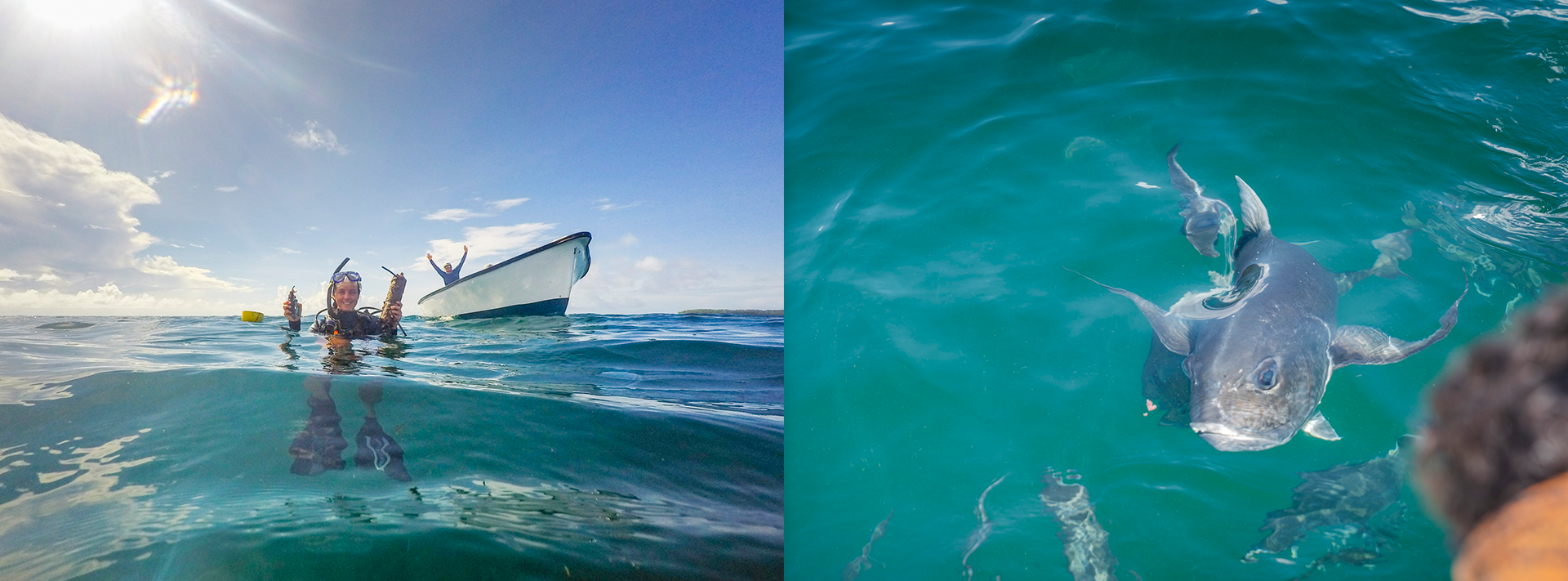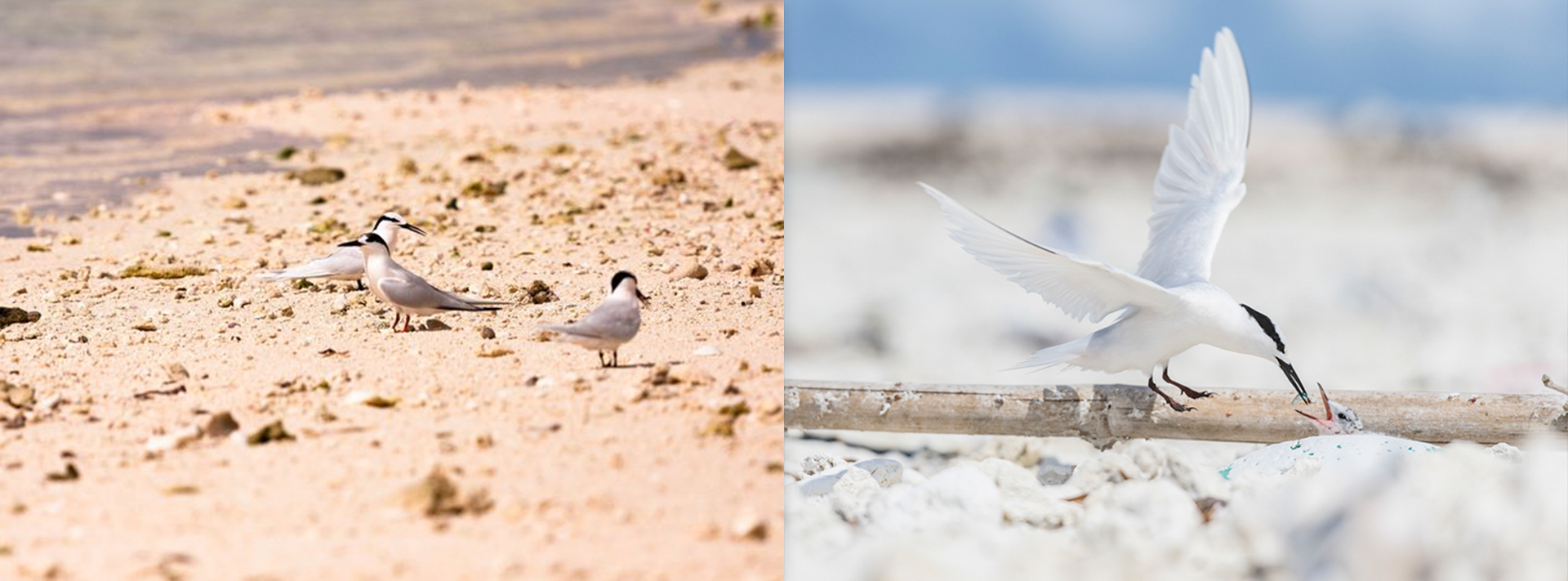Experience the ultimate family fly fishing adventure!
Blue Safari Fly Fishing Seychelles invites all families to join us for a fishing adventure of a lifetime. If you book a full-board fly fishing experience, your children 17 years and under can stay for FREE and are only charged for the fly fishing package and flights. Join us between June and October 2025 and experience some of the worlds best flats fishing with your loved ones making memories for life.
Enquire Now
ALPHONSE FOUNDATION QUARTERLY CONSERVATION UPDATE SEPTEMBER 2021

The partners managing the conservation and preservation of the unique biodiversity of Alphonse, Cosmoledo and Astove atolls are happy to share with you the quarterly newsletter highlighting project news, developments and incredible nature sightings from the Outer Islands of Seychelles.
1. Mapping the spatial ecology and post-release behaviour of the giant trevally (Caranx ignobilis) to support conservation management decisions
The first download of data for 2021 went well, a collaborative effort between ICS and the Blue Safari dive team downloaded data from all 68 receivers and replaced the batteries. Just in time before the full force of the South-East Monsoon winds arrived. The data from this download will be interesting as it will show any effects of post-lockdown gradual increase in angling activity around St François, results will be published altogether after the three-year study.
All 40 accelerometer trials have now been conducted successfully on Giant Trevallies inside the Alphonse lagoon. Preliminary observations seemed to show the shorter fight-times and reduced air exposure had less effect on the condition and post-release behaviour of the fish, meaning a potentially lower risk of predation and lasting negative effects – results are currently under analysis.

2. Future Investigation into spatial ecology and physiological effects of angling on Milkfish (Chanos chanos)
Milkfish are enigmatic, migratory fish that are highly prized within the tropical fly-fishing community as they are primarily planktivores- feeding on a variety of floating microorganisms and algae, meaning an adaptive technical approach is needed to hook them. Additionally, despite their vegetarian preferences, they fight incredibly hard on the end of a line.
We hope to add 16 Milkfish to the acoustic network to monitor their spatial ecology and residency time around the atolls as little is known about the movement patterns and habitat usage of Milkfish. Moreover, we finally hope to prove a fishing legend that the fish fight for so long because they don’t develop lactic acid in their muscles. This will be investigated by taking post-capture blood samples.
We are fundraising for this project at the moment, any contributions are greatly appreciated!

3. Potential Hybirdisation event in nesting bird colony at St. François
If you look closely at the picture, you will see something doesn’t quite fit…
During annual monitoring of the Black Nape Tern nesting colony at St François, ICS noticed a Roseate Tern living happily amongst the colony, a sighting which has been noted every year since 2007. This is a suspected hybridisation event that, if confirmed, will be only the second documented example of a pairing between these two species!

4. Development of reef manta project of include acoustic telemetry
Making full usage of the acoustic receiver array already in place around the atolls recording movements of Giant Trevallies, the partnership between the Manta Trust, ICS and Blue Safari are finalising the project outline to acoustically tag 20 Mantas.
Once approved this will shed much-needed light on the spatial ecology and atoll residency time of this incredible, yet endangered species. The movement patterns will be added to the photo identification data to give a broader picture of the resident Manta population dynamics around the Alphonse Group, critical in developing effective conservation management strategies.

Interesting Sightings
During a visit to St François in mid-June, five dead Melon-headed Whales (Peponocephala electra) were sighted by staff, ICS returned at a later date to take samples but the whales were in a too-advanced state of decomposition. It cannot be confirmed what caused the deaths of the whales, as no bite marks or obvious injuries were present. However, there were very strange tides noticed at St François over those days, with the upper lagoon having completely dried out even at high tide.
This species of small whale is known for getting caught out by unusual tidal patterns and for mass strandings. The intensely strong bond between the pod causes all family members to follow an overly curious individual into potentially dangerous situations which can lead to them all becoming beached.
It’s unfortunately not the first time Melon-headed Whales have been seen beached on outer islands, Desroches reported a similar occurrence in 2016.
Sightings like this highlight the need for conservation presence on the outer islands, unusual events in remote places often go undetected but this valuable information can help increase scientific understanding which in turn leads to better conservation.

Upcoming Conservation Highlights
All stakeholders in the outer islands are closely involved with the Seychelles Marine Spatial Plan (SMSP) which is in the implementation stage.
The SMSP is the first-of-a-kind debt for nature swap that saw Seychelles’ President legally demarcate 30% of the countries’ territorial waters as protected areas in exchange for a 15% national debt relief from its EU creditors.
The next few months will be crucial in turning the paper bill into effective management on the ground, with all outer islands where Blue Safari and ICS operate included in Zone 2 protection.
Contribute to Conservation
The critical projects conducted by ICS and Blue Safari in the outer islands of Seychelles have been successful in creating long-term monitoring programmes because of the sustainable model of the foundation. However, Covid-19 has and continues to have an effect on guest numbers and therefore donations. If you would like to help, any contribution of any size is greatly appreciated.
Please go to the following link to see a copy of the Foundation brochure with project details: Alphone Foundation Brochure
Or email – eleanor@bluesafari.com or alphonse@ics.sc

Join our fishing community
Join our community to get regular updates about our fishing adventures, guide updates and special offers.
